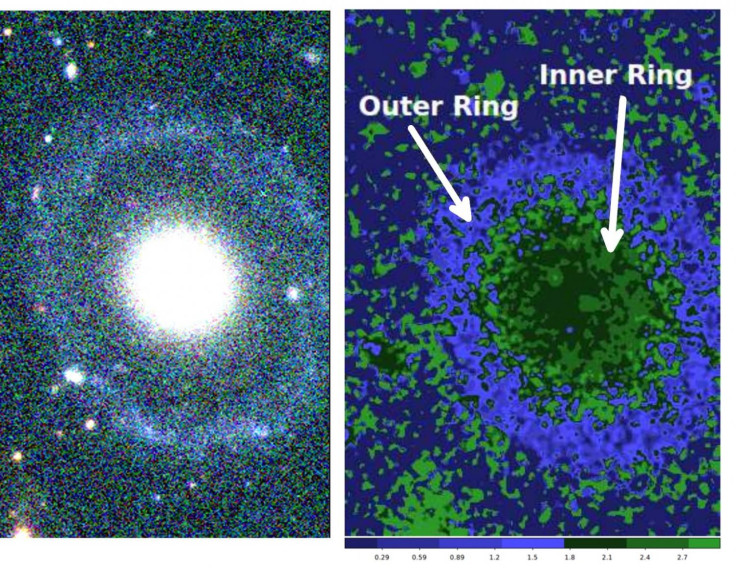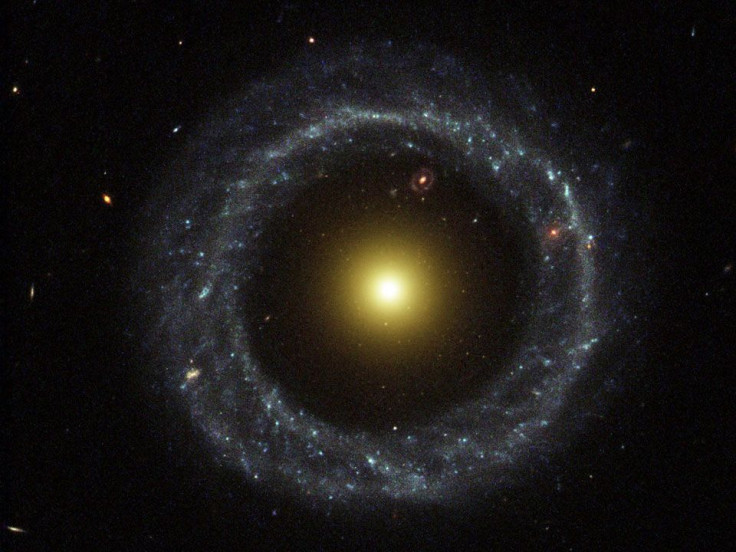Astronomers Discover PGC 1000714: A Rare Kind Of Hoag-Type Galaxy

The observable universe has over 100 billion galaxies. Of these, roughly 0.1 percent are believed to belong to a class of objects known as Hoag-type galaxies — named after the American astronomer Arthur Hoag, who discovered them in 1950.
A new study published in the latest edition of the Monthly Notices of the Royal Astronomical Society has now described, in unprecedented detail, the galaxy PGC 1000714 — a structure located roughly 359 million light-years from Earth that most likely belongs to this class of rarely observed galaxies.
Most of the galaxies seen in the universe consist of a diffuse disk of stars, gas and dust, much like those seen in the Milky Way. Hoag-type galaxies, however, consist of a central core surrounded by a visibly unconnected ring of matter — a feature that, in the years following the discovery of Hoag’s Object — triggered a debate over whether these structures are one galaxy or two.
“Whenever we find a unique or strange object to study, it challenges our current theories and assumptions about how the Universe works. It usually tells us that we still have a lot to learn,” study co-author Patrick Treuthardt, an astrophysicist at the North Carolina Museum of Natural Sciences, said in a statement released Wednesday.
For the purpose of the study, the researchers collected multi-waveband images of PGC 1000714 using a large-diameter telescope in Chile. Doing so revealed a red, and therefore comparatively older, central body, surrounded by a blue and young outer ring. Surprisingly, the images also revealed a second inner ring around the central core.
“We’ve observed galaxies with a blue ring around a central red body before, the most well-known of these is Hoag’s Object,” Treuthardt said. “However, the unique feature of this galaxy is what appears to be an older diffuse red inner ring.”

Scientists believe that this unusual galaxy formed after a collision with another one, and due to the gravitational effect of a central bar that has since vanished. However, the authors of the study said that further high-resolution infrared data would be needed to understand the exact mechanism behind its formation and evolution.
“The different colors of the inner and outer ring suggest that this galaxy has experienced two different formation periods,” lead author Burcin Mutlu-Pakdil, a graduate student at the Minnesota Institute for Astrophysics, said in the statement. “From these initial single snapshots in time, it’s impossible to know how the rings of this particular galaxy were formed.”
© Copyright IBTimes 2024. All rights reserved.






















